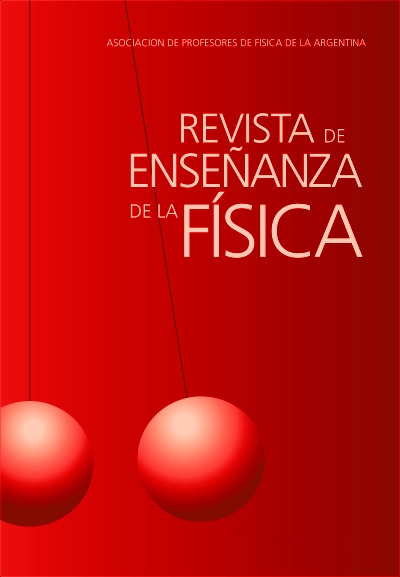The boiling point: the stubborn persistence of some myths
DOI:
https://doi.org/10.55767/2451.6007.v35.n1.41392Keywords:
Boiling point, Science education, History of science, Common misconceptionsAbstract
The history of the boiling point of water as a thermometric fixed point is an excellent example of how tortuous the real process of building scientific knowledge can be, as opposed to its frequent idealized portrayal as a linear progression. In this article a summary recapitulation is presented, based on the works of researcher and philosopher of science Hasok Chang (Department of History and Philosophy of Science, University of Cambridge), some of its epistemological lessons are discussed, and it is employed to exemplify how the history of science can enrich science education and contribute to eradicate some common misconceptions among the general public and even in the non-specialist scientific community.
References
Aitken, J. (1878). On Boiling, Condensing, Freezing, and Melting. Transactions of the Royal Scottish Society of Arts, 9, 240–287. Recovered from https://www.mv.helsinki.fi/home/asmi/Aitken/
Aitken, J. (1880–81). On Dust, Fogs, and Clouds. Transactions of the Royal Society of Edinburgh, 30(1), 337–368. Recovered from https://www.mv.helsinki.fi/home/asmi/Aitken/
Avedisian, C. T. (1985). The homogeneous nucleation limits of liquids. Journal of Physical and Chemical Reference Data, 14(3), 695–729. Recuperado de https://doi.org/10.1063/1.555734
Biot, J.–B. (1816). Traité de physique expérimentale et mathématique. 4 volúmenes. Deterville, Paris. Recuperado de https://gallica.bnf.fr/ark:/12148/bpt6k948360#
Cavendish, H., Heberden, W., Aubert, A., De Luc, J.–A., Maskelyne, N., Horsley, S. y Planta, J. (1777). The Report of the Committee Appointed by the Royal Society to Consider of the Best Method of Adjusting the Fixed Points of Thermometers; and of the Precautions Necessary to Be Used in Making Experiments with Those Instruments. Philosophical Transactions of the Royal Society of London, 67, 816–857. Recuperado de https://doi.org/10.1098/rstl.1777.0038
Chang, H. (2014). Inventing Temperature: Measurement and Scientific Progress. Oxford University Press. ISBN: 0195337387, 9780195337389. https://doi.org/10.1093/0195171276.001.0001
Chang, H. (2008). The myth of the boiling point. Science Progress, 91(3), 219–240. doi: 10.3184/003685008X360632
De Luc, J.–A. (1772). Recherches sur les modifications de l’atmosphére. 2 volúmenes. Ginebra, editor no consignado. Recuperado de https://doi.org/10.3931/e-rara-1330
Donny, F. (1846). Mémoire sur la cohésion des liquides, et sur leur adhérence aux corps solides. Annales de chimie et de physique, 3ª serie, 16, 167–190. Recuperado de https://books.google.be/books?id=V-U3AAAAMAAJ&hl=fr&pg=PA167#v=onepage&q&f=false
Dufour, L. (1861). Recherches sur l’ébullition des liquides. Archives des sciences physiques et naturelles, nueva serie, 12, 210–266. Recuperado de https://books.google.com.ar/books?id=9xFbAAAAQAAJ&printsec=frontcover&hl=es&source=gbs_ge_summary_r&cad=0#v=onepage&q&f=false
Garai, J. (2009). Physical model for vaporization. Fluid Phase Equilibria, 283, 89–92. doi: 10.1016/j.fluid.2009.06.005
Gay–Lussac, J.–L. (1818). Sur la fixité du degré d’ébullition des liquides. Annales de chimie et de physique, 2ª serie, 7, 307–313.
Gernez, D. (1875). Recherches sur l’ébullition. Annales de chimie et de physique, 5ª serie, 4, 335–401. Recuperado de https://books.google.tl/books?id=-qcyjI1krREC&pg=PA335&hl=es&source=gbs_toc_r&cad=3#v=onepage&q&f=false
Kelton, K. F. y Greer, A. L. (2010). Nucleation in condensed matter: applications in materials and biology. Elsevier. ISBN: 0080912648, 9780080912646.
Marcet, F. (1842). Recherches sur certaines circonstances qui influent sur la température du point d’ébullition des liquides. Bibliothéque universelle, nueva serie, 38, 388–411. Recuperado de https://books.google.com.ar/books?id=vqq3jls2maAC&printsec=frontcover&hl=es&source=gbs_ge_summary_r&cad=0#v=onepage&q&f=false
Quan, X., Chen, G. y Cheng, P. (2011). A thermodynamic analysis for heterogeneous boiling nucleation on a superheated wall. International Journal of Heat and Mass Transfer, 54, 4762–4769. http://dx.doi.org/10.1016/j.ijheatmasstransfer.2011.05.026
Skripov, P. V., Bar–Kohani, T., Antonov, D. V., Strizhak, P. A. y Sazhin, S. S. (2023). Approximations for the nucleation temperature of water. International Journal of Heat and Mass Transfer, 207, 123970. https://doi.org/10.1016/j.ijheatmasstransfer.2023.123970
Tomlinson, C. (1868–69). On the Action of Solid Nuclei in Liberating Vapour from Boiling Liquids. Proceedings of the Royal Society of London, 17, 240–252. Recovered from https://www.jstor.org/stable/4142051
Downloads
Published
Issue
Section
License

This work is licensed under a Creative Commons Attribution-NonCommercial-NoDerivatives 4.0 International License.
Aquellos autores/as que tengan publicaciones con esta revista, aceptan los términos siguientes:Los autores/as conservarán sus derechos de copiar y redistribuir el material, bajo los términos estipulados en la Licencia de reconocimiento, no comercial, sin obras derivadas de Creative Commons que permite a terceros compartir la obra bajo las siguientes condiciones:
- Reconocimiento — Debe reconocer adecuadamente la autoría, proporcionar un enlace a la licencia e indicar si se han realizado cambios. Puede hacerlo de cualquier manera razonable, pero no de una manera que sugiera que tiene el apoyo del licenciador o lo recibe por el uso que hace.
- NoComercial — No puede utilizar el material para una finalidad comercial.
- SinObraDerivada — Si remezcla, transforma o crea a partir del material, no puede difundir el material modificado.
- Los autores/as podrán adoptar otros acuerdos de licencia no exclusiva de distribución de la versión de la obra publicada (p. ej.: depositarla en un archivo telemático institucional o publicarla en un volumen monográfico) siempre que se indique la publicación inicial en esta revista.
- Se permite y recomienda a los autores/as difundir su obra a través de Internet (p. ej.: en archivos telemáticos institucionales o en su página web) antes y durante el proceso de envío, lo cual puede producir intercambios interesantes y aumentar las citas de la obra publicada. (Véase El efecto del acceso abierto).










